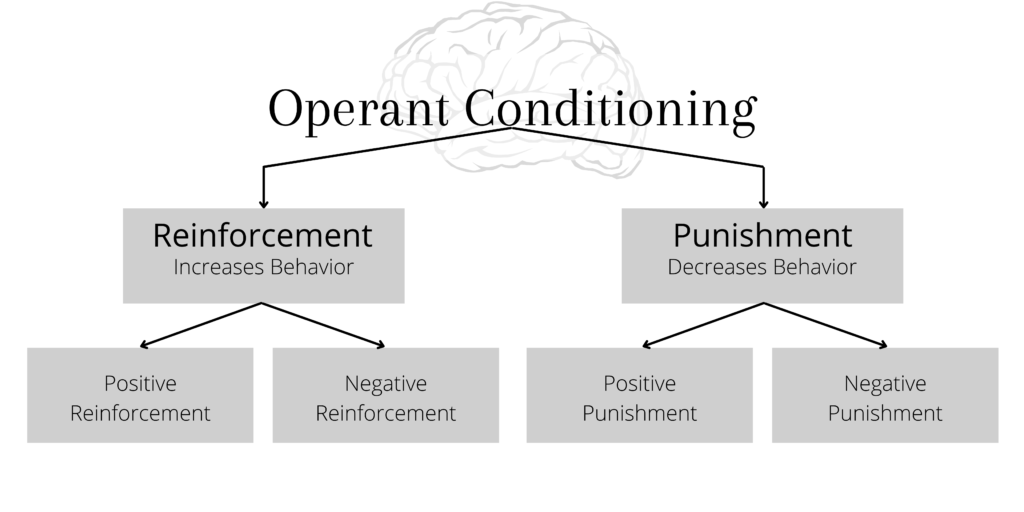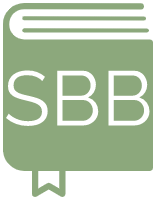The 4 Step Model of Behavior Change
- Cue
- Craving
- Response
- Reward
This model of behavior change was originally studied by psychology and behaviorist B.F. Skinner (1904-1990). Skinner was a proponent of operant conditioning.
Operant Conditioning:
TLDR: To simplify, operant conditioning is the idea that rewards increase the likelihood that a behavior will recur and punishment decreases that likelihood.

The 4 Types of Behavior Change
- Positive Reinforcement
- ‘Positive’ implies the addition of something new to a situation
- ‘Reinforcement’ implies that you are trying to increase a behavior
- Example: When you are teaching your dog to sit, you offer them a treat after they sit
- Negative Reinforcement
- ‘Negative’ implies the removal of something from a situation
- ‘Reinforcement’ implies that you are trying to increase a behavior
- Example: When a student works very hard in class and accomplishes a lot, their teacher can remove their homework assignment for the night to reinforce their hard work in class
- Positive Punishment
- ‘Positive’ implies the addition of something new to a situation
- ‘Punishment’ implies that you are trying to decrease a behavior
- Example: When a child misbehaves in class, the teacher makes them write the class rules 10 times to decrease their misbehavior
- Negative Punishment
- ‘Negative’ implies the removal of something from a situation
- ‘Punishment’ implies that you are trying to decrease a behavior
- Example: When a child does not do their homework, their parent takes away their TV time to decrease the times that their child does not do their homework
How to Facilitate Change in 4 Steps
You can accomplish and facilitate behavior change through the 4 step model that all behaviors follow : cue, craving, response, reward.
Cues are triggers that initiate a behavior, it is a bit of information that indicates that a reward is coming. Cravings are the motivational force driving a behavior. Responses are the actual behaviors or habits you perform. Rewards are the end goal of every behavior or habit.
However, without all four of these components, you will not be able to establish a behavior as a habit. When missing a cue, you will have no indication that a behavior needs to occur. Without a craving, you won’t have the motivation to start a behavior. Without a response there is no behavior to repeat. When missing a reward, you will have no reason to repeat your behavior.
Next are some examples of these four steps of behavior that occur in everyday life. Examine how your own behaviors fit into these four steps by analyzing each behavior’s cue, craving, response, and reward.
| Cue | Craving | Response | Reward |
| You wake up | You want to feel energized | You go for a run | You associate waking up with going for a run |
| Your dog brings you a toy | You want to have fun with your dog | You play fetch with your dog | You associate your dog bringing you a toy with playing fetch |
| You get sweaty from a workout | You want to feel clean | You take a shower | You associate being sweaty from a workout with showering |
| You get to work | You want to feel organized | You write a to-do list for the day | You associate getting to work with writing a to do list |
If you’re looking for more information on how to approach changing your behavior for the better – try these 3 different layers of behavior change and see which one you are forgetting to address.
Other Posts Inspired by James Clear’s Atomic Habits:
Share this:
- Click to share on X (Opens in new window) X
- Click to share on Facebook (Opens in new window) Facebook
- Click to share on LinkedIn (Opens in new window) LinkedIn
- Click to share on Reddit (Opens in new window) Reddit
- Click to share on Pinterest (Opens in new window) Pinterest
- Click to share on WhatsApp (Opens in new window) WhatsApp




Greetings! Very helpful advice in this particular article! It is the little changes that will make the largest changes. Many thanks for sharing!